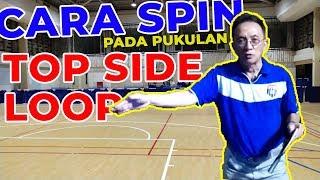Tennis Forehand - 4 Ways To Create Massive Power On Your Forehand - Part Two
Description
Tennis Forehand - 4 Ways To Create Massive Power On Your Forehand - Part Two. On the ATP tour, around 75% of winners are hit with the forehand. It doesn't matter what level you play tennis at, your forehand should be one of your main weapons. In order to build a consistent and powerful forehand in tennis, you need to use the major muscle groups. This includes the legs and the trunk muscles. This means using rotational power and ground force on your tennis forehand.
When you study the best tennis players in the world, such as Rafael Nadal, Roger Federer, and Novak Djokovic, they all hit their forehands in different ways, they use different forehand grips, they have unique swings, yet they all use the same fundamentals to create massive power on their forehands.
The key to more power on any stroke is increased racket head speed.
Whatever helps you generate more racket head speed will give you more power. Some players can generate racket head speed by using their arms alone, however, that method is high risk and less rewarding. By relying on the smaller muscle groups in your forearm, you're increasing the risk of injury and the muscles will get tired much quicker.
However, if you use the large muscle groups, you'll reduce the risk of injury along with increasing the duration of time you can create massive power.
Watch Part One Here - https://youtu.be/xcseRwZUqjU
Step Three - The Swing. If you have a tiny swing, you'll struggle to create momentum on your tennis forehand and you won't have much space to accelerate the racket prior to and during the contact point. However, with a small swing, it's much easier to time the shot and make contact out in front of the body. On the flip side of that, you can have a massive swing (Del Potro and Fernando Gonzalez both use huge forehand swings and have two of the biggest forehands of all time) which will allow you a lot of space to create momentum and increase the racket head speed throughout the swing.
The problem with having a massive forehand swing is timing, it becomes much harder to time the ball properly and often players with a big swing will end up hitting the ball late.
The middle ground is ideal, a good size swing which helps you create racket head speed and gives you space to accelerate but not too big that it causes issues with your timing.
Roger Federer and Novak Djokovic are two players who use a circular loop on their forehands to great effect.
Step Four - Relaxation. A tight muscle won't fire as quickly as a relaxed muscle. When players go for extra power, it's very common that they tense up, resulting in stiff muscles that actually lose them power.
An experienced player knows that in order to create more power, you want to stay loose with the arm and as relaxed as possible to allow the major muscle groups to fire properly.
Breathing is crucial in this process. If you hold your breath as you make contact on your forehand, you'll end up being tight and stiff at the point of contact. If you exhale prior to and during the strike zone, your body will stay loose and this, in turn, will help you generate more power.
Video Timeline:
00:00 - Forehand Power Source #3 - The Swing
1:45 - Big Swing vs Small Swing
3:20 - Forehand Power Source #4 - Relaxation
5:40 - How To Stay Loose On Your Forehand
6:28 - Grip Tightness On The Forehand
9:20 - Recap of Forehand Power Sources
#Tennis #TennisForehand #TopTennisTraining





















Comments